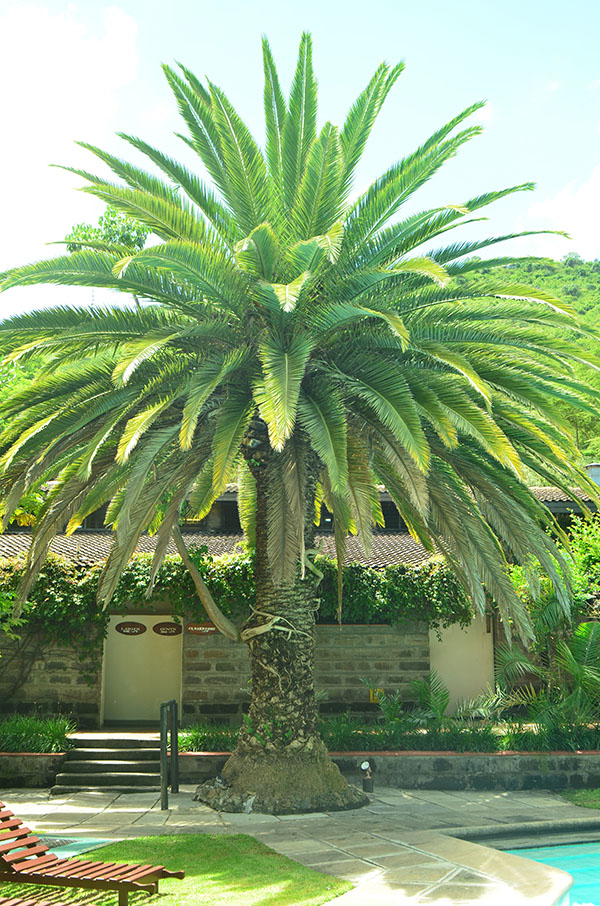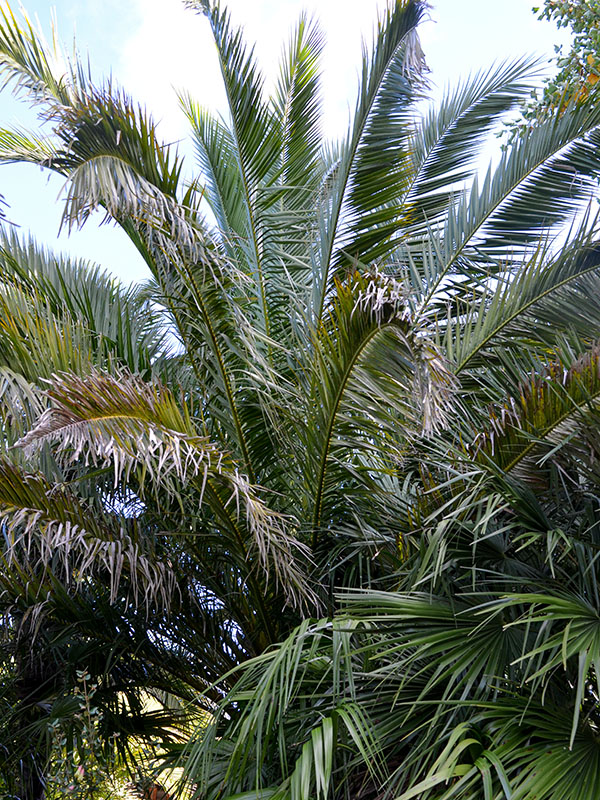
Tropicals, Woody > Phoenix > Phoenix canariensis > Phoenix canariensis
Phoenix canariensis
Canary Date Palm, Canary Island Date Palm
Origin: Native to the Canary Islands.
| Family |
| Arecaceae |
| Genus |
| Phoenix |
| Species |
| canariensis |
| Category |
| Tropicals, Woody |
| Type |
| Tree (evergreen) |
| USDA Hardiness Zone |
| 11a - 11b |
| Canadian Hardiness Zone |
| Requires cool season protection under glass. |
| RHS Hardiness Zone |
| H1c |
| Temperature (°C) |
| 4 - 10 |
| Temperature (°F) |
| 40 - 50 |
| Height |
| 18 - 20 m |
Photographs
Description and Growing Information
Flowering Period
| Landscape |
| The Phoenix Palm is best grown on the Patio in a large pot and brought under cover in the winter, and as a street tree or garden plant. |
| Cultivation |
| Grow best in full sun and a well-drained loamy soil, and it can tolerate a wide range of exposures, including deep shade, and a wide range of soil types, including sand and heavy clay. It has a unique ability to tolerate both severe drought and flooding very well, which makes them ideal to plant in housing tracts in which the soil was heavily compacted. |
| Growth |
| Medium |
| Habitat |
| From sea-level up to 600 m in a range of habitats, from humid areas just below cloud forest to semi-arid areas where its presence usually indicates groundwater. |
| Bark/Stem Description |
| A single-trunked palm tree, pinnate palm to 20 m or more tall, 60 - 90 cm in diameter, often with a much wider base, and rounded crown of dark green feather leaves 4-6 m long. Trunk dull brown, marked with broad, diamond-shaped leaf base scars. |
| Flower/Leaf Bud Description |
| The species is dioecious, with separate male and female trees. Staminate inflorescence erect, yellow-green with reddish-brown tomentum when young becoming brown and coriaceous, to about 40 cm. Pistillate flowers mostly in distal half of rachillae, yellow-white, with faintly sweet scent; calyx cupule about 2.5 mm high; petals about 3 x 4 mm. |
| Leaf Description |
| Dark green feather leaves 4-6 m long, with pinnae to 20-40 cm long closely spaced along the rachis. Phoenix canariensis has long, sharp spines at the bases of the leaves, which are formed from modified leaflets. |
| Fruit Description |
| Inedible fruit, 5 cm long, 12 mm wide and orange in colour when ripe. The seed is typically date-shaped with rounded ends. |
| Notable Specimens |
| Glendurgan Garden, Mawnan Smith, Falmouth, Cornwall, United Kingdom. Trebah Gardens, Mawnan Smith, Nr Falmouth, Cornwall. |
| Propagation |
| Germinate seeds in a warm environment, they germinate quite quickly. |



